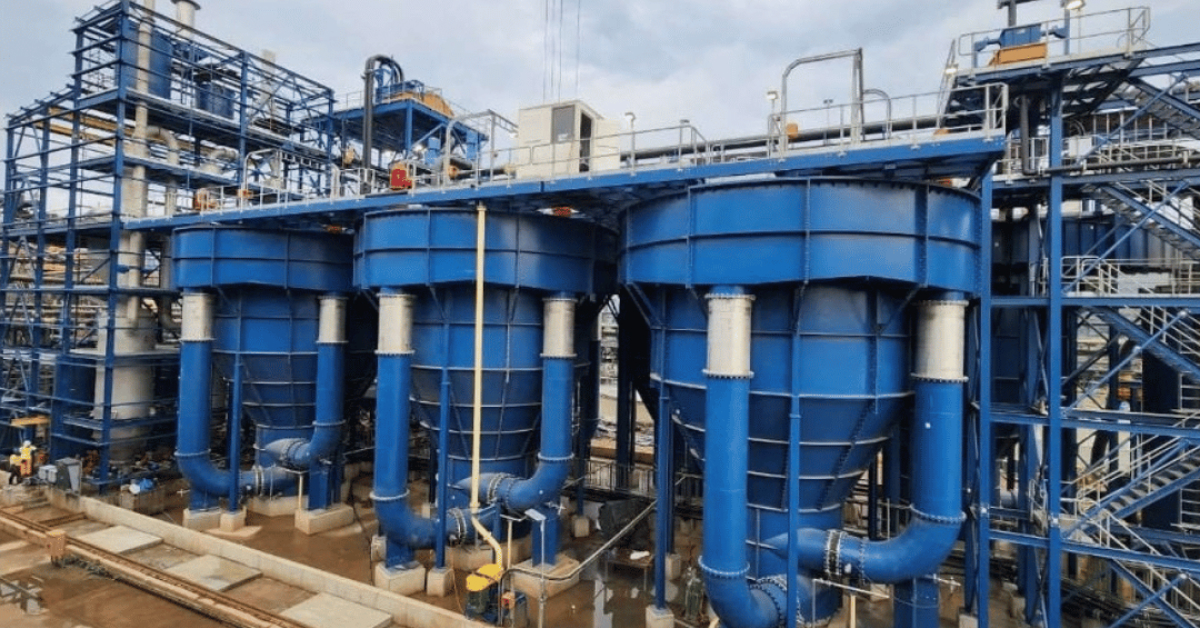PART THREE
By David Blitenthall,
development engineer, SAISC
The third article in the series looks at how to assess the compression resistance of an unsymmetric section to SANS10162-1:2005.
Consider the unequal leg angle section, shown in figure 1 below, with rectangular axes (x-x and y-y) that are parallel to the legs of the angle and the principal axes (u-u and v-v) that are inclined at an angle alpha (α) to the x-x axis. The shear centre can, for practical purposes, be taken to be at the
intersection of the centrelines of the two legs.
The distances between the shear centre and the centroid are given as xo and yo in the x-y system and uo and vo in the u-v system. From the geometry of the problem, it can be shown that these can be calculated as follows:
Note that ax, ay and α are all tabulated in the Southern African Steel Construction Handbook (SASCH). Expressing the requirements of Clause 13.3.2 in terms of the principal axes u-u and v-v, the elastic torsional-flexural buckling stress is defined as the smallest root of the following cubic equation:
In which
This cubic equation can be solved through the use of mathematical software with the appropriate solution algorithms. Alternatively, the method described below can be used which requires the equation be written in the form:
where:
and
It can be shown that the three roots of the equation for buckling of unsymmetrical sections are always real and positive (Timoshenko and Gere). In such a case, the solution of the cubic equation can be obtained from the following:
Let
The three roots are then given by:
with the critical elastic buckling stress being the smallest of these three.
To demonstrate the use of this approach, the compression resistance of a concentrically loaded 1.75m long 80 x 60 x 8 angle will be calculated. The angle is assumed to be made from Grade S355JR steel and all end conditions are assumed to be such that the effective length factors are qual to unity.
The following section properties are obtained from Table 2.14 of the SASCH:
Area = 1.06 x 103mm2
ax = 25.5mm
ay = 15.6mm
α = 28.6 degrees
ru = 27.6 mm
rv = 12.7 mm
J = 24.4 x 103 mm4
Cw ≈ 0 mm6
The additional properties that are required are calculated as follows:
As for all member design, the class of section must first be checked. A quick check will show that the angle is not a class 4 section.
The next step is to assess the elastic flexural and elastic torsional buckling strength of the member. This is simple enough and the answers are given below:
This in turn, allows one to calculate the coefficients of the cubic equation.
Make the relevant substitutions:
From this, the three roots can be calculated:
The critical elastic torsional-flexural buckling stress is therefore 103 MPa. An equivalent non dimensional slenderness ratio, λ, can then be calculated as the square root of fy/fe which enables one to determine the compression resistance according to Clause 13.3.1.
References:
Timoshenko, S.P. and Gere, J.M. “Theory of Elastic Stability”, 2nd Edition, McGraw-Hill Book Company, 1961. Zureick, A., “Design Strength of Concentrically Loaded Single Angle Struts”, AISC Engineering Journal, 1st Quarter, 1993.






